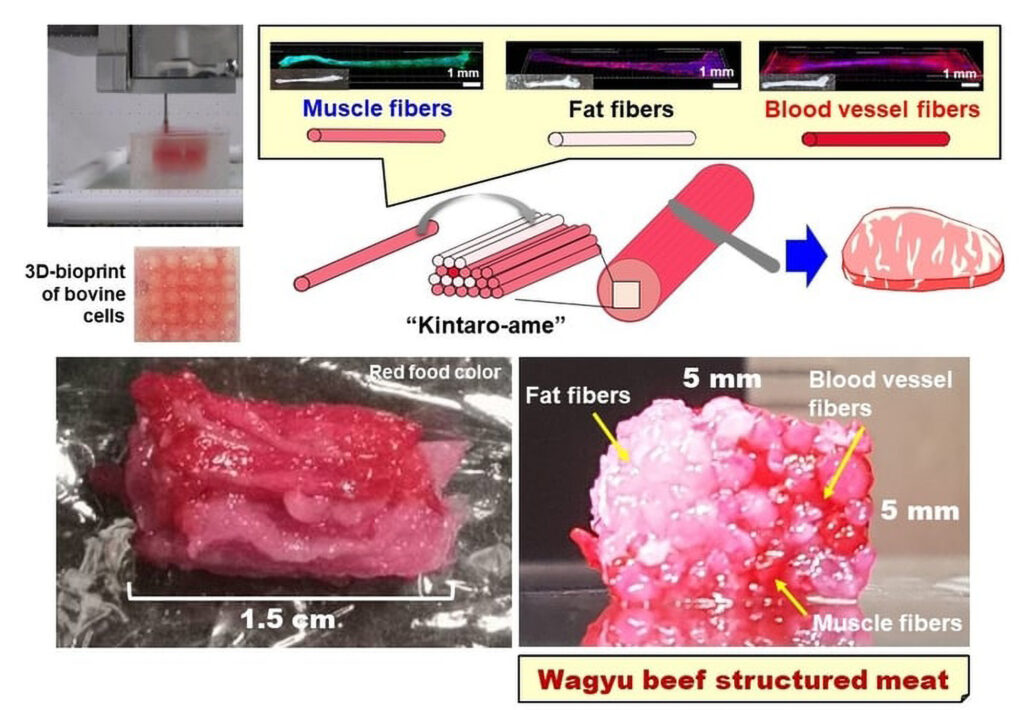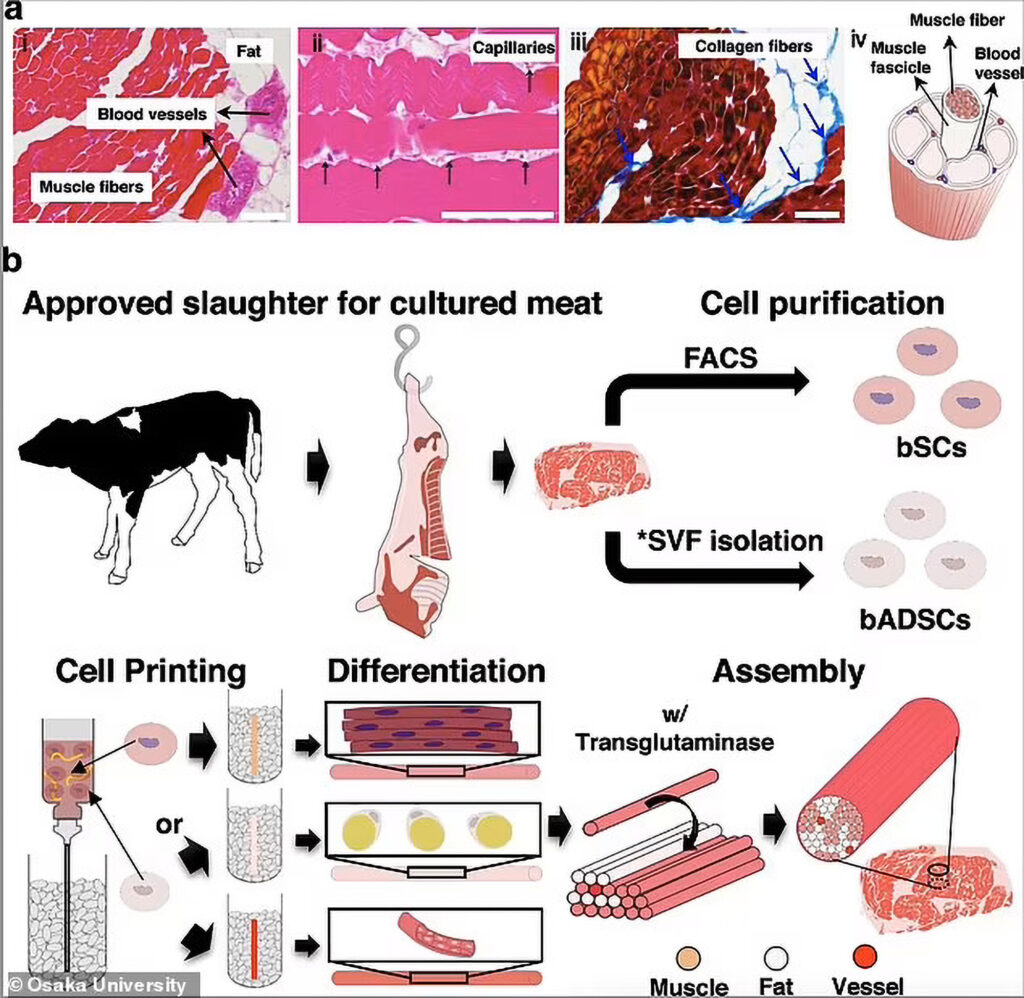First Ever 3D Printed Wagyu Beef Created By Boffins Who Hope It Can Make Eating Steak More Sustainable
In a world-first scientists revealed that they can 3D print expensive Wagyu Beef which they claim is ‘the real thing’ but doesn’t produce the huge amounts of greenhouses gasses released by the production of ‘normal’ beef steaks.
Wagyu (which means Japenese Cow) steak is famous all around the world for its high content of intramuscular fat known as ‘marbling’ with prime cuts costing upwards of 200 USD (145 GBP).
Scientists from the University of Osaka, Japan, announced that they had successfully printed imitations of Wagyu steak in a paper titled ‘Engineered whole cut meat-like tissue by the assembly of cell fibres using tendon-gel integrated bioprinting’ yesterday (24th August).

The research team said in a statement that they used stem cells isolated from Wagyu cows to 3D print the meat alternative containing muscle, fat, and blood vessels arranged to resemble a traditional steak.
According to the researchers, the production of the ‘steak’ begins with two types of stem cells, called bovine satellite cells and adipose-derived stem cells which the scientists then trick into growing into every type of cell needed to create the steak.
The cells and fibres created from the stem cells which included muscle fibres, blood vessels and fat are then arranged in a 3D shape using bioprinting before being sliced into a traditional steak-like shape.
Dong-Hee Kang, the lead author of the paper, said that he hopes this technology will: “help usher in a more sustainable future with widely available cultured meat.”
According to the Food and Agriculture Organization of the United Nations (FAO), agriculture is responsible for 18 per cent of the total release of greenhouse gases worldwide with a considerable amount attributed to cattle farming.
The research team at Osaka University hope to contribute to creating steaks that taste great but don’t have the environmental impact of traditional beef produced by farming cattle.

Research compiled by ‘Our World In Data’ claims beef is particularly damaging to the environment finding that for every 1 kilogramme (2.2 lbs) of beef produced just under 100 kilogrammes (220 lbs) of greenhouse house gases are released into the atmosphere.
In the statement, they claimed that currently the only available ‘cultured meat’ is made of poorly organized muscle fibre cells that fail to reproduce the complex structure found in real beef steaks.
Michiya Matsusaki, a senior author of the paper, said: “By improving this technology, it will be possible to not only reproduce complex meat structures, such as the beautiful Sashi of Wagyu beef but to also make subtle adjustments to the fat and muscle components.”
The paper didn’t discuss how much the printed meats cost and how easily the technology could be scaled up.
‘Engineered whole cut meat-like tissue by the assembly of cell fibers using tendon-gel integrated bioprinting’ was published in Nature Communications.



